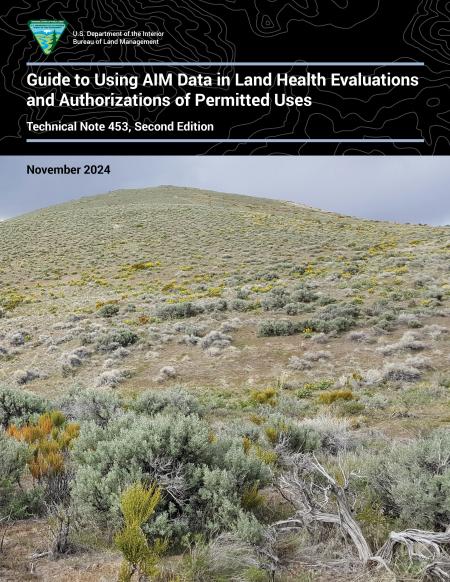Guide to Using AIM Data in Land Health Evaluations and Authorizations of Permitted Uses: Technical Note 453, 2nd edition

BLM Technical Note 453, Second Edition
BLM Assessment, Inventory, and Monitoring (AIM) data represent one of the largest available datasets to inform resource management decisions on these lands. This technical note serves as a guide for using AIM data, along with other available data, to complete evaluations of land health and inform decisions about land management as required by BLM policy (43 CFR Subpart 4180 and Subpart 6103). The key steps for completing a land health evaluation for a given area using AIM data include: selecting indicators for each applicable land health standard; setting benchmark values that define good conditions for each selected indicator; identifying relevant AIM sites and grouping them appropriately for analysis; and summarizing which benchmarks are or are not attained at each site. A land health evaluation report then draws conclusions about which of the applicable land health standards are or are not achieved, with justification from AIM data and other information sources. For any areas where land health standards are not achieved or making significant progress toward achievement, a causal factor determination must be completed that identifies the cause(s) of land health standard nonachievement by evaluating available information about land uses and natural disturbances. If restoration actions or changes in land uses are planned to address issues identified in the evaluation and/or determination, a National Environmental Policy Act (NEPA) document, such as an environmental assessment, may be necessary to analyze the potential environmental impacts of federal actions. AIM data and related conclusions from the land health evaluation and causal factor determination can inform many NEPA steps including assessing conformance with land use plan objectives and describing the affected environment, environmental consequences (effects analysis), and cumulative effects. AIM data, along with other BLM data, provide a tremendous opportunity to streamline, increase transparency, and improve outcomes of multiple use public land management.
Supercedes TN 453, 1st Edition
